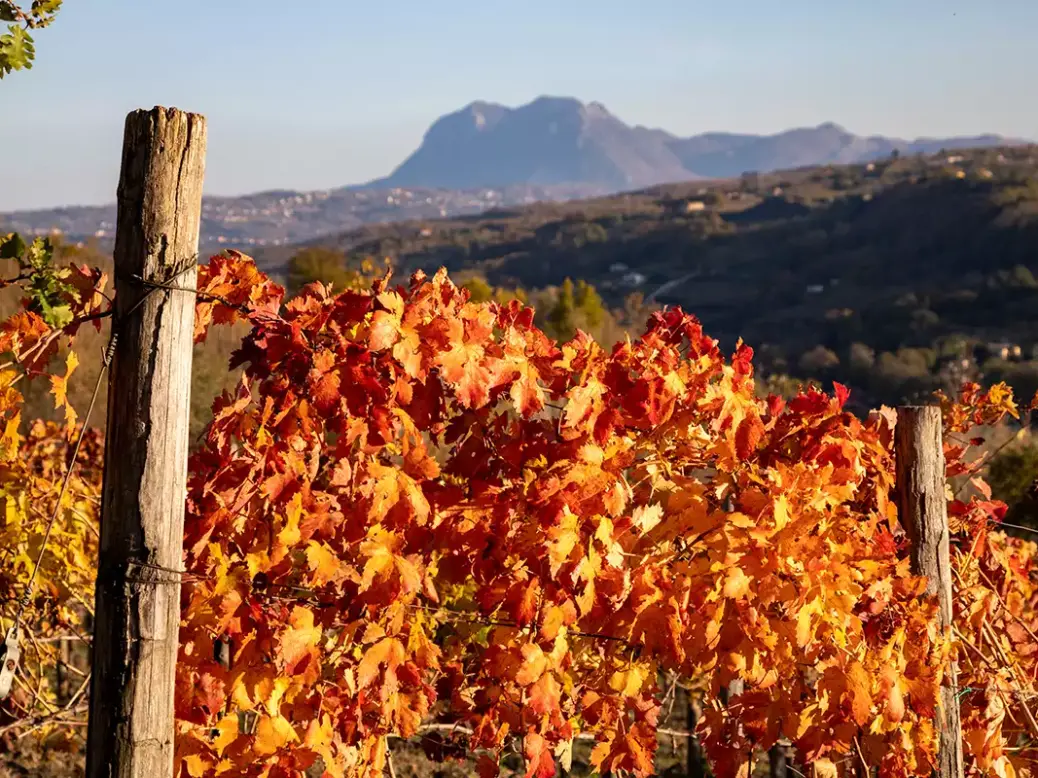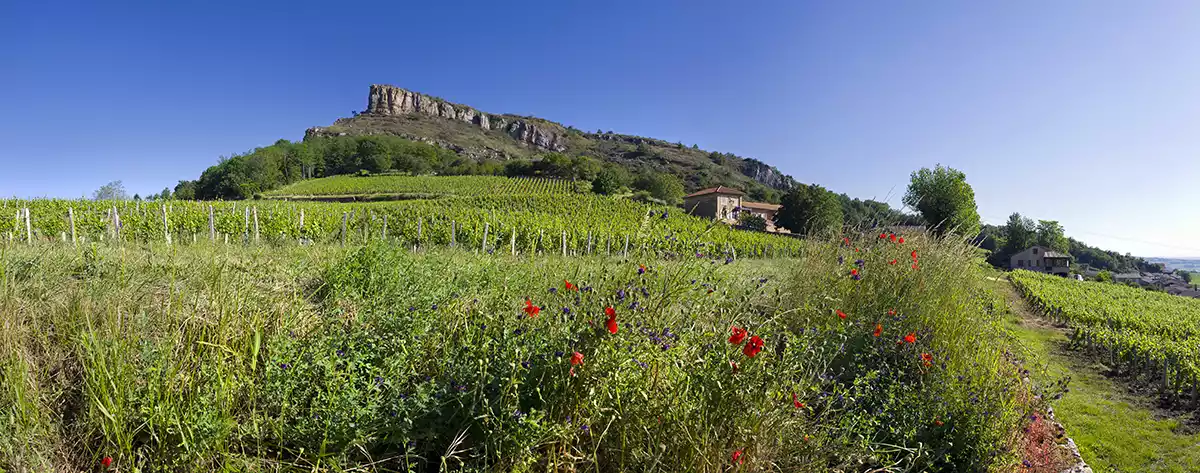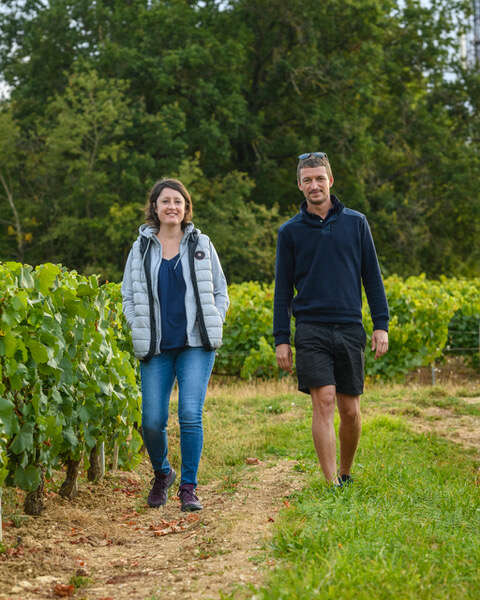
Taurasi joined the ranks of Italy’s DOCGs 30 years ago, at a time when red wine was in the ascendancy—specifically red wine that was deep in color, rich in alcohol, and ripe with fruit. The Aglianico grape, which must make up 85 percent of a Taurasi wine, has all of these in abundance, with plenty of acid and an excess of tannin to boot. The wine had earned not just a DOCG, but a nickname, as well: “The Barolo of the South.” Taurasi’s time, it seemed, had come.
The north and the south of Italy have long enjoyed different trajectories, and different infrastructures. Barolo at that time was in the throes of a dialectical battle that pitted modernists and barriques against traditional botti, single-vineyard cru against multi-site blends—a battle that enriched both sides, eventually. Barriques appeared in Taurasi as well; in 1994 Luigi Moio, now the owner of Quintodecimo, returned from his time in Burgundy to introduce them at Antonio Caggiano’s estate, for example. But if their presence led to heated discussions locally, the international wine press took little notice; critics bemoaned rusticity and dirty cellars and slickly over-oaked “international” wines with equal abandon. Despite a record of achievement that included wines such as Mastroberardino’s Radici Riserva, already a legend before small oak barrels became part of its elevage in 1998, no new standard of quality or style took form.
Taurasi’s long road to recognition
Without that dialectic, Taurasi has taken a longer road to recognition, a journey that is now proving worthwhile. The region’s wine industry has long been dominated by large companies and cooperatives, but a new generation is breaking free of the negociant system and reclaiming their vineyards for their own wines. From 2016 to 2020 the area of vineyard declared as Taurasi doubled, and almost a score of new wine cellars appeared. The number of companies bottling Taurasi wine jumped from 76 to 102.
Cantine Addimanda is part of this new boom, and began bottling and selling wines themselves in 2018, after many generations as grape farmers. Gianluigi Addimanda says they began expanding plantings and revitalizing their vineyards in 1993, but a crash in grape prices in 2007 led them and other growers to begin marketing and selling their own wines rather than selling to negociants.
Addimanda owns 8ha (20 acres) of vines, the youngest planted in 2016 and the oldest dating back over two centuries. Ancient, pergola-trained vines, own-rooted, gnarled, and with trunks as thick as trees, are part of the region’s heritage. Addimanda says the older training systems require proper handling to tap the full potential of these old vines, a skill under threat thanks to mechanization.
With the birth of smaller companies, regionality within Taurasi is becoming more apparent as well. Research led by Dr Boris Basile at the University of Naples Federico II divided Taurasi into four subzones. Campania, home to Mount Vesuvius, trumpets its volcanic soils, and these feature prominently in the western portion of the appellation, a plateaued area where erosion has had less of an impact. Elsewhere marls, clays, and fluvial soils can be found.
Elevation plays a role as well, especially in the southerly, more mountainous communes of Paternopoli and Castelfranci, where vineyards can be planted as high as 700m (2,300ft). Feudi di San Gregorio, one of Campania’s better-known names, has made a study of the region, producing two terroir-centric wines in their FeudiStudi line, and producers such as Boccella, Villa Raiano, and Michele Perillo have demonstrated the finesse that can be brought to Aglianico with the cooling effects of altitude.
Volcanic soils and the potential for elegance
Volcanic soils have been much talked about of late, and there is a certain mineral character to some Taurasi wines that strikes a common note with other volcanic reds like those of Etna. This note becomes more prominent when new oak and overextraction don’t overwhelm and suppress it. Sabino Colucci returned from Bordeaux to his family winery, Colli di Castelfranci in 2016 with that idea firmly in mind. “I started with a new kind of winemaking, with a shorter maceration time and finer control of the tannins,” he says. He’s brought similar practices to Antonio Molettieri and Ifalco, where he consults. “I think Taurasi has great potential but is not entirely expressing it at the moment,” he says, “but this is a great moment because a lot of little producers are starting up and a lot of single vineyards are finding expression” now that quality and individual character of their grapes are not being lost in larger production blends or smothered in oak.
For an Italian wine region, it is perhaps a badge of honor, or a signifier of impending greatness, for one of its leaders to abandon the DOCG. Former jockey Luigi Tecce, one of the area’s more outspoken traditionalists, took over his family’s property in 1997; today he owns a total of 5ha (12 acres), spread between Paternopoli and Castelfranci. Large botti and gentle extraction have been his watchwords since the beginning, and for some time you could point to Tecce’s wines as reliable demonstrations of Taurasi’s potential for elegance. The wines and the vineyards have not changed, but they no longer speak for Taurasi, as Tecce has withdrawn from the DOCG in frustration with some of the bureaucratic burdens it engendered. Colucci and his peers, meanwhile, continue along paths Tecce has already trodden, while still proudly bearing the Taurasi name.






